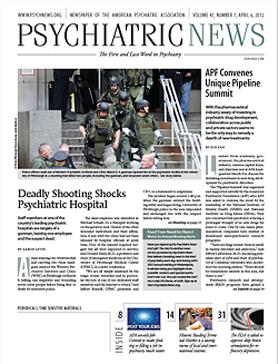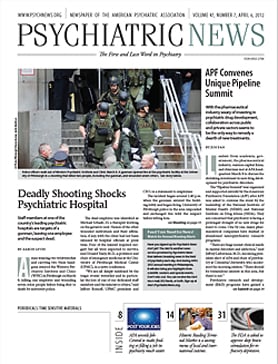Patients in a vegetative or minimally conscious state caused by traumatic brain injury (TBI) are more likely than those with a hypoxic or ischemic etiology to respond to commands with either behavioral or neurological action.
The disparate effects of the cause of injury in patients were little known until recently. Now a group of Canadian, British, and Belgian researchers have built on their previous work with functional magnetic resonance imaging (fMRI) by using electroencephalograms (EEGs) to explore that issue. Results were reported in the journal Neurology on March 13.
Out of 23 patients in a minimally conscious state (MCS), five were able to respond to commands asking them to imagine squeezing their hands or wiggling their toes. They could not actually move, but could generate brain activity detectable on an EEG. All five of those patients had traumatic brain injuries, but none of the eight hypoxic/ischemic patients tested was able to respond.
“[O]ne-third of the TBI MCS patients possessed a range of high-level cognitive abilities that were not evident from their external behavior, but which were required to complete this EEG task,” wrote Damian Cruse, Ph.D., a postdoctoral scientist, and Adrian Owen, Ph.D., a professor at the University of Western Ontario, and colleagues. Those abilities included working memory, attention, and language comprehension, among others.
The use of EEG technology extends Owens’ work with fMRI, and the different technology could have practical implications.
“Hardware for fMRI is not available in a lot of places,” said David Arciniegas, M.D., an associate professor of psychiatry and neurology and director of the Neurobehavioral Disorders Program at the University of Colorado School of Medicine, in an interview with Psychiatric News. “EEG can be easily brought to the bedside to elicit command following with patients who can’t give an overt behavioral response.”
The work of Owen and Cruse is supported by the known neurophysiology of brain injury, said Arciniegas.
“The most common cause of MCS and PVS [permanent vegetative state] is hypoxic/ischemic brain injury, which produces more widespread damage,” he said. “But with traumatic brain injury, a fair amount of injury elsewhere still allows the brain to do things. So it makes sense that the group with more residual ability would be the TBI group rather than the hypoxic/ischemic group.”
Owen summed up his group’s earlier research in a lecture in March at the National Institutes of Health in Bethesda, Md.
Beginning in the late 1990s, he and his colleagues in Cambridge, England, and Liege, Belgium, began experimenting with healthy, sedated volunteers in an fMRI scanner.
They created a test of motor imagery, asking the volunteers to “imagine playing tennis,” producing activity across the premotor cortex in the fMRI scans, starting and stopping on command.
In addition, a spatial navigation task, asking subjects to think about moving from room to room in their houses, lit up the lateral premotor cortex, the parahippocampal gyrus, and the posterior parietal cortex.
Eventually, Owen tried these same tests on a 23-year-old woman in a vegetative state for five months due to a brain injury in a traffic accident. She responded exactly as the volunteers did.
“The lesson to be learned from this is that appearances are deceptive,” said Owen in an interview. “We can no longer presume to judge a patient’s level of awareness based on his or her physical response, which has been the basis for diagnosis in this population for many years.”
The researchers have now scanned dozens of patients who were in a vegetative state and found that roughly 20 percent had this preserved cognitive function. Technology has opened the door to asking substantive questions of these patients, for example, “Are you too warm or cold? Are you in pain?”
But even more ethically significant questions loom, said Arciniegas.
Patients with locked-in syndrome (with preserved consciousness and minor ability to respond behaviorally, as with eye movements) usually indicate that they would rather be alive than not.
“But that’s the worry we all have,” he said. “If we have the ability to ask such questions, are we prepared to deal with the answers we get, particularly if they raise end-of-life issues?”

What’s Next for This Research?
Adrian Owen, Ph.D., discusses some of the implications of his research in an interview with Psychiatric News.
Should all post-TBI patients in a vegetative or minimally conscious state be tested with this process?
I think there are enough data to suggest that as many of these patients as possible should be scanned using functional imaging methods. I think this will help us determine how many of these “covertly aware” patients are out there. That said, it is important to emphasize that this does not mean that all TBI patients in a vegetative or minimally conscious state be tested with this process, because a patient does need a certain amount of residual intact brain structure to be able to activate the regions that we used to detect awareness.
Could these techniques serve as triage to decide which patients might benefit from some additional treatment?
Obviously, given limits on time and resources, it makes perfect sense to try these techniques in those patients who we know might be able to benefit from them. So yes, we envisage using the technique to identify those patients who are most likely to benefit from further investment of clinical resources.
Do they have any other applications in brain-injured patients other than PVS/MCS patients?
Yes, many of the techniques that we have developed for assessing awareness and other aspects of cognitive function can be generalized to other situations. For example, it is enormously difficult to assess cognitive function in late-stage dementia, and some of our techniques using functional neuroimaging may help in that area.
What are the next steps in your research?
We are working hard to develop a true brain-computer interface for some of these patients. My goal is to develop an affordable machine that will allow patients who we discovered to be aware to communicate on a routine basis with those around them. We are not there yet, but things are moving along very quickly, and I think we know what we need to do technically and theoretically to get there.

